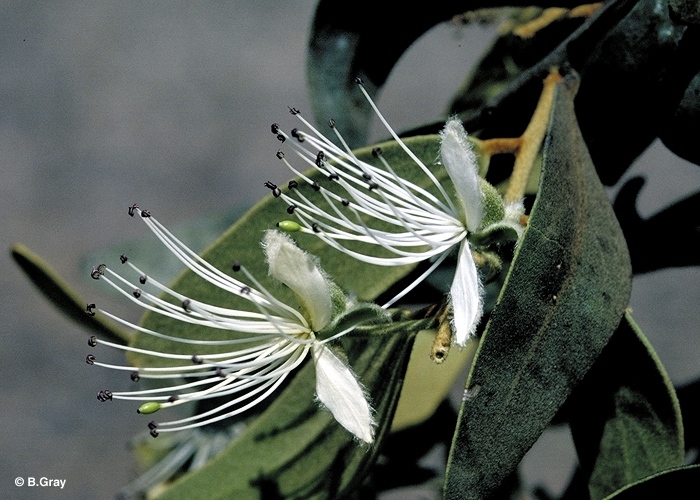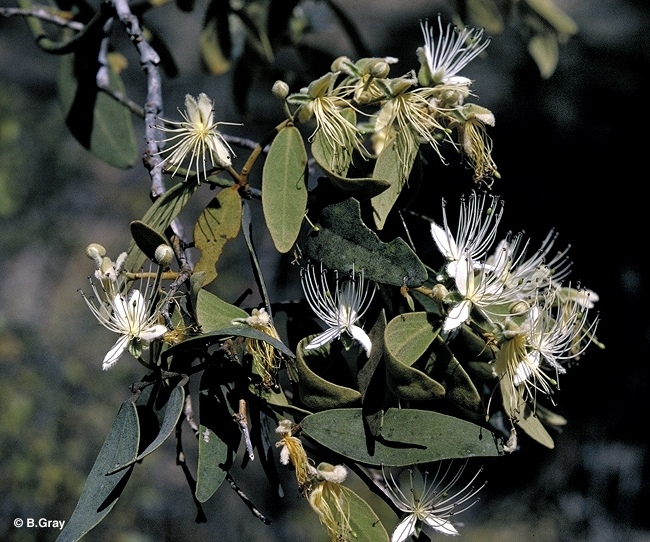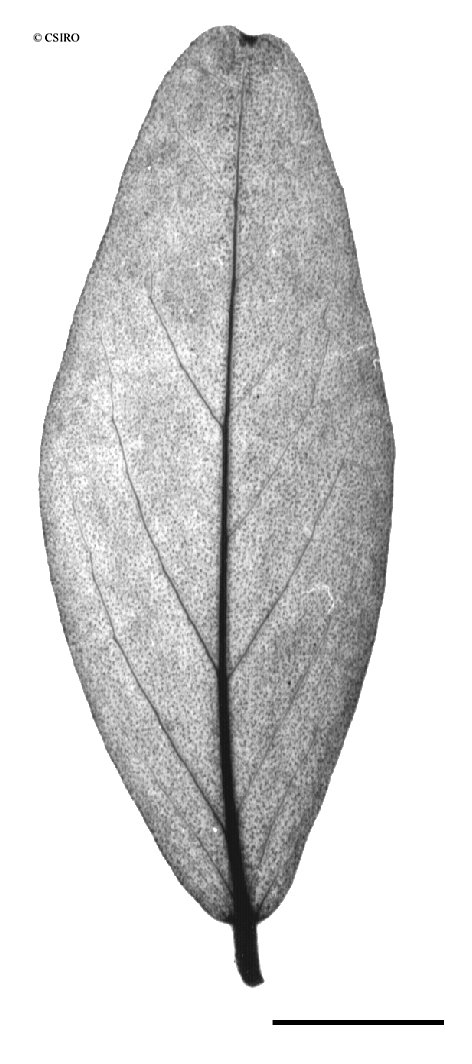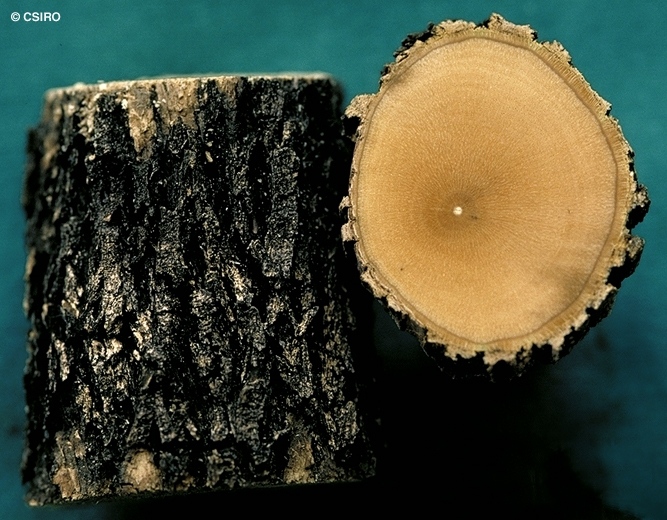Australian Tropical Rainforest Plants - Online edition
Capparis lasiantha R.Br. ex DC.






Candolle, A.P. de (1824) Prodromus 1: 247. Type: in Novae-Hollandiae ora orientali inter tropicos. (v.s.) [given by M.Jacobs, Blumea 12 (1965) 462-463 as R. Brown s.n.; holo:G-DC; iso: BM, K.].
Wyjeelah; Nepine; Split Jack; Thulla-Kurbin; Nipang Creeper; Creeper, Bush; Creeper, Nipan; Native Orange; Orange, Native; Bush Caper; Nipan
Vine stem diameters to 5 cm recorded. Younger stems clothed in bumps each with a short sharp spine on top.
Leaf blades about 22-70 x 6-30 mm, petioles about 2-5 mm long. Venation not very obvious. Young shoots and young leaves densely clothed in brown woolly hairs.
Flowers pleasantly perfumed, produced on separate pedicels about 10-15 mm long one above the other in the leaf axils. Sepals 4 (2+2) the outer sepals smaller, about 6-8 mm long, 1 pouched at the base, inner sepals about 8-9 mm long. Petals about 9-10 x 4-5 mm, densely clothed in white woolly hairs on the outer surface. Staminal filaments about 2 mm long, attached low down on the back of the anther. Gynophore about 18 mm long. Ovules numerous.
Endemic to Australia, occurs in WA, NT, CYP, NEQ and wideaspread in Australia. Altitudinal range in northern Australia from near sea level to 400 m. Usually grows in open forest in the drier parts of Australia but also found in vine thicket and monsoon forest.
Food plant for the larval stages of the White Caper Butterfly. Common & Waterhouse (1981).
This species may have some medicinal uses as aboriginals were reputed to use it in the treatment of stings.
Aborigines of the Broome area used a cold decoction of the bark for swellings and bites of both snakes and insects. They also used the nectar from the flowers as a cough remedy. Cribb (1981).





